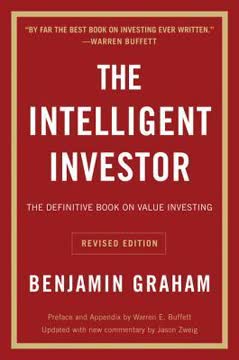Key Takeaways
1. Inflation is inevitable, but its pace is manageable
"As long as the overwhelming majority of Americans maintain firmly held existing opinions concerning the duties and obligations of their government, more and more inflation is inevitable."
Inflation's root cause. Inflation sprouts during economic downturns, not prosperity. When recessions hit, government revenue shrinks while mandatory spending increases. This leads to deficit spending, which fuels inflation. However, the pace of inflation is not as rapid or uncontrollable as many fear.
Mitigating factors. Two forces help moderate inflation:
- The tendency of families to increase their wealth production when faced with greater needs
- The "Industry of Discovery" - ongoing scientific and technological advancements that continuously make things cheaper or better
Investor strategy. While inflation is a major force to reckon with, investors shouldn't panic about its speed. Take time to find outstanding investments rather than rushing into the first inflation hedge that comes along. The real danger lies in being so frightened of inflation's progress that one makes hasty, ill-considered investment decisions.
2. Institutional buying shapes market dynamics
"Institutional buying in the stock market comes largely from five major sources. These are (1) pension and profit-sharing funds, (2) trustees for the benefit of private individuals, represented mainly by the trust departments of large banks, (3) investment trusts, (4) insurance companies, and (5) educational and charitable organizations, including the sizable transactions of our wealthier universities."
Shift in market dynamics. The rise of institutional buying has fundamentally changed the stock market landscape. Unlike pre-World War II era, when high estate taxes and income taxes created a downward bias in stock prices, institutional buying now provides an upward bias.
Impact on stock prices. Institutional demand concentrates on a relatively small number of stocks, creating a scarcity value and driving up their price-earnings ratios. This trend is likely to continue and even intensify in the 1960s.
Investment strategy.
- Look for companies on the edge of institutional acceptance
- Seek businesses with outstanding management, growth potential, and adequate size
- Be cautious of stocks losing institutional favor, as they may experience sharp declines
3. Foreign competition presents challenges and opportunities
"Alert corporate management is looking for places where it can earn an abnormally high rate of return on additional investment."
Competitive landscape. The rise of foreign competition, particularly from countries with much lower labor costs, poses a significant challenge to U.S. companies. However, this threat also creates opportunities for businesses that can adapt and innovate.
Strategies for success:
- Maintain technological leadership in specialized fields
- Develop products too complex for easy replication
- Leverage government contracts to build civilian expertise
- Focus on quality to establish brand loyalty
Investor considerations:
- Be cautious of companies with major stakes abroad due to political risks
- Look for businesses that can benefit from increased foreign industrial strength
- Seek companies with superior products that can compete globally despite higher labor costs
4. Population growth alone doesn't guarantee economic prosperity
"Unlike Egypt, China, and probably much of India, our economy does provide considerable leeway enabling individuals and more particularly families to increase their wealth (as well as the community's) if the urge to do so is great enough."
Demographic shift. The post-World War II baby boom will create increased demand for various goods and services as this population ages. However, this demographic trend alone does not guarantee economic prosperity or investment success.
Economic implications:
- Increased demand for automobiles, housing, and related goods
- Potential strain on family budgets as children age
- Possibility of increased workforce participation to meet growing needs
Investment perspective. Population growth may cause shifts in demand between product types, but it's difficult to predict exactly how families will adjust their spending. Focus on broader technological and industrial trends rather than making investment decisions based solely on demographic projections.
5. Mergers and acquisitions: A double-edged sword
"Mergers and acquisitions are exactly the same as forward passes. If they can be executed successfully they will cause a business to progress with far above average speed. They can be dazzlingly successful. Their very nature, however, carries sizable inherent risks that can result in less earnings rather than more."
Potential benefits:
- Rapid increase in sales and market share
- Cost savings through economies of scale
- Access to new technologies or markets
Inherent risks:
- Cultural clashes and personnel friction
- Unforeseen liabilities or weaknesses in acquired companies
- Distraction from core business operations
Guidelines for evaluating M&A:
- Prefer integrations that move backward or forward in the supply chain
- Be cautious of mergers between companies in dissimilar industries
- Look for acquisitions that bring new products or talented individuals
- Avoid companies that constantly seek growth through acquisition
- Be wary of diversification for its own sake
6. The chemical industry offers steady, long-term growth
"Nothing will cause a company's sales to increase more quickly or more spectacularly than the acquisition of one or more operating units."
Industry characteristics:
- Growth rate 2.5 to 3 times faster than general business
- High capital requirements for expansion
- Complex production techniques create barriers to entry
Investment appeal:
- Relatively easy to identify leading companies
- Strong protection against sudden competitive upsets
- Potential for steady, long-term appreciation
Investor strategy:
- Focus on diversified chemical companies with strong research capabilities
- Look for opportunities to buy during economic downturns
- Be cautious of specialty chemical companies, which can be more volatile
7. Electronics: High-risk, high-reward investments
"Here is an area where annual growth rates are maintained year after year that elsewhere in the financial world would be incredible. The best electronic companies can and do grow at from 25 to 45 per cent a year."
Industry dynamics:
- Rapid technological advancement
- Lower capital requirements compared to chemicals
- Significant portion of business from government contracts
Key factors for success:
- Strong research and development capabilities
- Ability to maintain technological leadership
- Effective coordination between research, production, and sales
- Balance between defense and civilian business
Investment considerations:
- Higher growth potential but also higher risk than chemical stocks
- Look for companies with products that have gained strong customer loyalty
- Evaluate the company's sales and marketing abilities, especially in civilian markets
8. Pharmaceuticals: Balancing innovation and market dynamics
"Here is an industry that in the modern sense only really came of age with the thrilling events that lead to the development of the antibiotics during World War II and the years that immediately followed."
Industry characteristics:
- Rapid growth potential due to ongoing medical advancements
- High research and development expenditures
- Regulatory approval process for new drugs
Market dynamics:
- New drugs don't immediately capture entire market
- Older drugs often retain some market share
- Importance of marketing and "detail men" in reaching doctors
Investment strategy:
- Focus on large, diversified drug companies with strong research and marketing capabilities
- Look for buying opportunities during periods of industry disfavor
- Be aware of the potential impact of government regulation on profit margins
9. Machinery industry: Capitalizing on efficiency demands
"With a few important exceptions, the machinery industry is not one which tends to get huge volume from repeat sales of the same model."
Industry appeal:
- Rising wages create demand for labor-saving equipment
- Opportunity in both industrial machinery and office equipment sectors
Key success factors:
- Continuous product improvement to encourage replacement sales
- Ability to adapt to changing customer needs and technological advancements
Investment considerations:
- Look for companies with strong research and development capabilities
- Evaluate the company's track record in introducing successful new products
- Consider the potential impact of economic cycles on machinery demand
Last updated:
FAQ
What's Paths to Wealth Through Common Stocks about?
- Investment Strategies Focus: The book by Philip A. Fisher emphasizes investment strategies related to common stocks, focusing on management quality and market psychology.
- Historical Context: Written in the 1960s, it reflects on economic conditions like inflation and foreign competition and their impact on stock values.
- Long-term Growth: Fisher advocates for patience and investing in companies with strong management that can adapt and grow over time.
Why should I read Paths to Wealth Through Common Stocks?
- Timeless Principles: The book offers investment principles that remain relevant today, focusing on management quality and long-term growth potential.
- Historical Insight: It provides a perspective on the 1960s investment landscape, aiding modern investors in understanding current market dynamics.
- Practical Advice: Fisher shares practical advice on evaluating stocks and selecting investments, valuable for both novice and experienced investors.
What are the key takeaways of Paths to Wealth Through Common Stocks?
- Management Quality Matters: Fisher emphasizes that management is the most critical factor in evaluating a stock's potential.
- Price-Earnings Ratios: Understanding changes in price-earnings ratios is crucial, as they significantly impact stock values.
- Long-term Focus: Investors should prioritize long-term growth and be patient, considering inflation's impact on investments.
What are the best quotes from Paths to Wealth Through Common Stocks and what do they mean?
- "Everyone seems to believe it, so it must be so.": Warns against following popular opinion without critical analysis, encouraging independent thinking.
- "In the first place it is nearly always the rich member of any family that the others envy and dislike.": Highlights social dynamics of wealth and the challenges of aspiring for it.
- "The greatest increases in stock values come about through alert corporate management.": Underscores the importance of strong management in driving a company's success.
What is the "scuttlebutt" method mentioned in Paths to Wealth Through Common Stocks?
- Gathering Information: Involves collecting information from various sources outside the company, like customers and suppliers, to assess strengths and weaknesses.
- Understanding Management: Helps investors understand management quality and operational effectiveness before making decisions.
- Comprehensive Picture: Provides a more accurate picture of a company's potential than relying solely on financial statements.
How does inflation affect stock investments according to Fisher?
- Inflation as a Constant: Fisher views inflation as an inevitable economic factor that investors must understand.
- Investment Strategy: Suggests avoiding investments that don't promise gains to counteract inflation's impact.
- Long-term Growth: Emphasizes investing in companies that can grow earnings faster than inflation to maintain purchasing power.
How does Paths to Wealth Through Common Stocks suggest selecting an investment counselor?
- Five-Step Process: Fisher outlines a process emphasizing alignment of investment philosophy and assessing track records.
- Focus on Long-Term Benefit: Advises choosing counselors who prioritize long-term financial well-being over immediate gains.
- Research and Background Checks: Encourages thorough background checks on counselors to ensure a good fit.
What role does institutional buying play in stock prices according to Fisher?
- Impact on Demand: Institutional buying creates significant demand, often leading to higher price-earnings ratios.
- Long-term Stability: Stocks favored by institutions tend to have more stability and less volatility.
- Market Influence: Institutional buying can have a greater impact on stock prices than individual buying.
What are the major growth industries identified in Paths to Wealth Through Common Stocks?
- Chemical Industry: Noted for its historical performance and potential for future expansion.
- Electronics Industry: Known for rapid growth rates and the importance of innovation.
- Pharmaceutical Industry: Driven by advancements in medical science and demand for new drugs.
How should investors evaluate potential investments according to Fisher?
- Focus on Management: Prioritize evaluating management quality as a critical success factor.
- Analyze Earnings Growth: Assess a company's earnings growth potential for major market price increases.
- Consider Market Sentiment: Understand market psychology to inform buying or selling decisions.
What does Fisher say about the relationship between assets and stock value?
- Limited Influence of Assets: Assets have little impact on market price unless liquidation is imminent.
- Earnings Over Assets: Emphasizes earnings generation over asset base as the driver of stock prices.
- Management's Role: Focus on a company's ability to generate earnings rather than its asset base.
What are the risks associated with investing in the pharmaceutical industry as discussed in Paths to Wealth Through Common Stocks?
- Regulatory Challenges: The industry is heavily regulated, affecting product launches and profitability.
- Market Competition: Faces significant competition, leading to stock price volatility.
- Dependency on Key Products: Reliance on a few key products can impact financial health if issues arise.
Review Summary
Paths to Wealth Through Common Stocks receives positive reviews, with an average rating of 4.2 out of 5. Readers appreciate Fisher's insights on stock market volatility, management evaluation, and acquisition strategies. The book is praised for its enduring relevance and valuable investment advice. Some reviewers find it a must-read for value investors, while others note its dated content. Fisher's emphasis on thorough analysis and long-term thinking resonates with many readers, though some find the language challenging.
Similar Books










Download PDF
Download EPUB
.epub digital book format is ideal for reading ebooks on phones, tablets, and e-readers.





